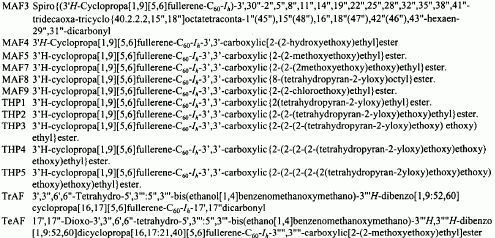Article contents
Fullerene Derivatives as Novel Resist Materials for Fabrication of MEMS Devices by Electron Beam Lithography
Published online by Cambridge University Press: 10 February 2011
Abstract
The fabrication of MEMS and electronic devices relies heavily on lithography. We have explored the application of derivatives of C60, as high resolution, high etch durability resists. Spin coating was used to produce films of various methanofullerenes on silicon substrates, with thickness ranging from 20 to 200 nm. These films behave as effective high resolution negative tone electron beam resists allowing sub 20 nm patterning of silicon which compares favorably with other negative tone resists. Organic solvents such as monochlorobenzene and chloroform can be used to develop the exposed films. The films have sensitivities of 4 × 10−3 to 8 × 10−4 C/cm2 for 20 keV electrons, more than an order of magnitude higher than the sensitivity of C60,. The dry etch durabilities of these compounds are considerably higher than those of conventional resists. A silicon grid with hole depth 160 nm and wall thickness 20 nm has been fabricated to demonstrate the high resolution and high etch durability of these resists.
- Type
- Research Article
- Information
- Copyright
- Copyright © Materials Research Society 1999
References
- 5
- Cited by



